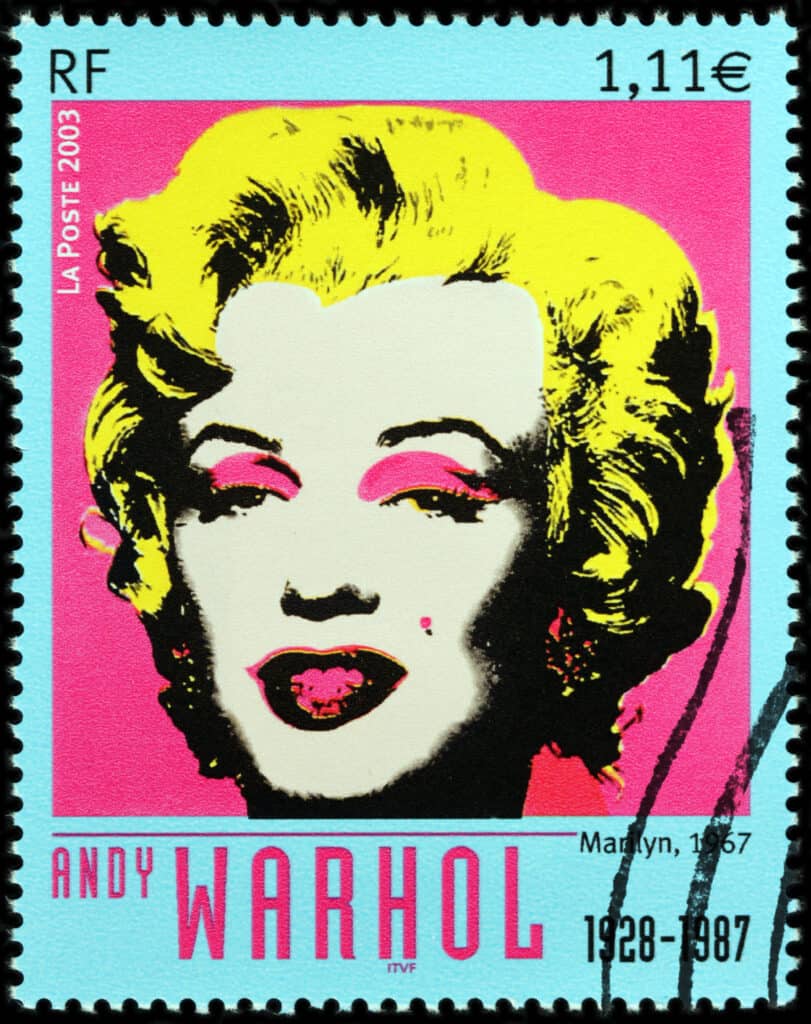Andrew Warhola Jr. or Andy Warhol was born on August 6, 1928, in Pittsburg, Pennsylvania to parents Andrew Warhola Sr., and Julia Warhola. His family emigrated from Slovakia to the United States in 1914 and lived in Oakland, Pittsburgh. Andy was the youngest of three brothers.
Warhol is famously known for his celebrated artworks like the Campbell’s Soup Cans (1962) and Brillo Box (1964) and was heavily influenced by his mother, who was also an artist. She provided him with art materials when he was sick and served him his favorite Cambell’s soup. He admired the work of artists Marcel Duchamp and Nathan Gluck, which made a profound impact on his own art.

Let’s explore Andy Warhol’s personal life, and how it has influenced his art.
Shy Kid
Growing up, the artist spent more time at home because he was shy and sickly. His mother, Julia, would serve him his favorite food, Campbell’s soup and she would even make flower arrangements on the cans.
Young Andy listened to the radio, collected posters of movie stars, and sketched. In 1945 he went to the School of Fine Arts at Carnegie Institute, and even if he was quiet, his artwork would stand out from those of other students’.
He also made extra money by making portraits of people, which made him realize that being an artist could be profitable.
Moving to the Big Apple
After graduating college in 1949, his friend Philip Pearlstine encouraged him to move to NYC, where he would, later on, make his mark in the art world.
There he did commissions for publication giants like Glamour Magazine, Vogue, and Vanity Fair, and would eventually become a successful commercial artist.
Due to a typo on one of his articles with the letter “a” missing from his surname, he chose to stick to Warhol since it sounded better. His mother would later join him in “the City That Never Sleeps” and they lived in a townhouse on Lexington Avenue. Mother and son loved cats (he was a cat person!).
Design Style and Subjects
As one of the first artists to use the silkscreen method, he transferred his sketches to another sheet which created the delicate blotted line texture that would become his signature style.
At first, his direction seemed to go towards illustrating ads; but eventually, Warhol flipped the script by transforming ads into art.
When artists like Jasper Johns and Robert Rauschenberg showcased their pop art designs in major galleries, it motivated Andy to be an accomplished painter and had his first art show at the Serendipity 3 restaurant.
By 1961, he had made his first pop art painting advertisement which was a collage of food, fitness, and facial surgery, followed by the iconic Coke bottle painting. He had originally done two versions—one abstract, and the other had clean lines.
He showed them to his friend Emile De Antonio, a director. Antonio recommended that he preferred the non-abstract version.
As written in the MoMA, his exhibits in July 1962 at the Ferus Gallery, which featured thirty-two Campbell’s Soup cans lined up in a single row enveloping the gallery, changed the way the public looked at art. It was also rare to choose consumer goods as a subject.
The other exhibition at New York’s Stable Gallery featured silkscreen prints with clean lines that allowed the same subject to be reproduced in different variants. Among the famous portraits was Gold Marilyn Monroe which would forever immortalize the Hollywood bombshell.
Through these events, he had officially arrived, gaining respect from the art community.
His work reflected post-war America’s consumerism culture, painting products, celebrities, shoes, money, and even himself. Warhol illustrated history and pop culture in the new era.
By the 1970s, his commissioned portraits amounted to about $25,000.
Legacy
Andy Warhol never stopped working until his death by cardiac arrest after a gall bladder surgery.
He was an artist, businessman, filmmaker, author, and magazine publisher who wasn’t afraid to explore new media and introduced the revolutionary concept in the art world referred to as “The Factory.”
The late artist’s studio was a place where he guided his assistants in using silkscreens and lithographs.
Known for swanky parties in the 1960s, The Factory became a haven for celebrities and art aficionados like Liza Minelli, Stevie Wonder, and Mick Jagger.
Making Bank Until Today
In 2022, the NYT reported that Warhol’s Shot Sage Blue Marilyn (1964) sold for about $195 million just under four minutes of bidding during an auction at Christie’s, NYC—beating the skull painting by Basquiat which had been sold for the highest price in 2017.
“We did sell the most expensive painting of the 20th century,” remarked Christie’s specialist, Alex Rotter.